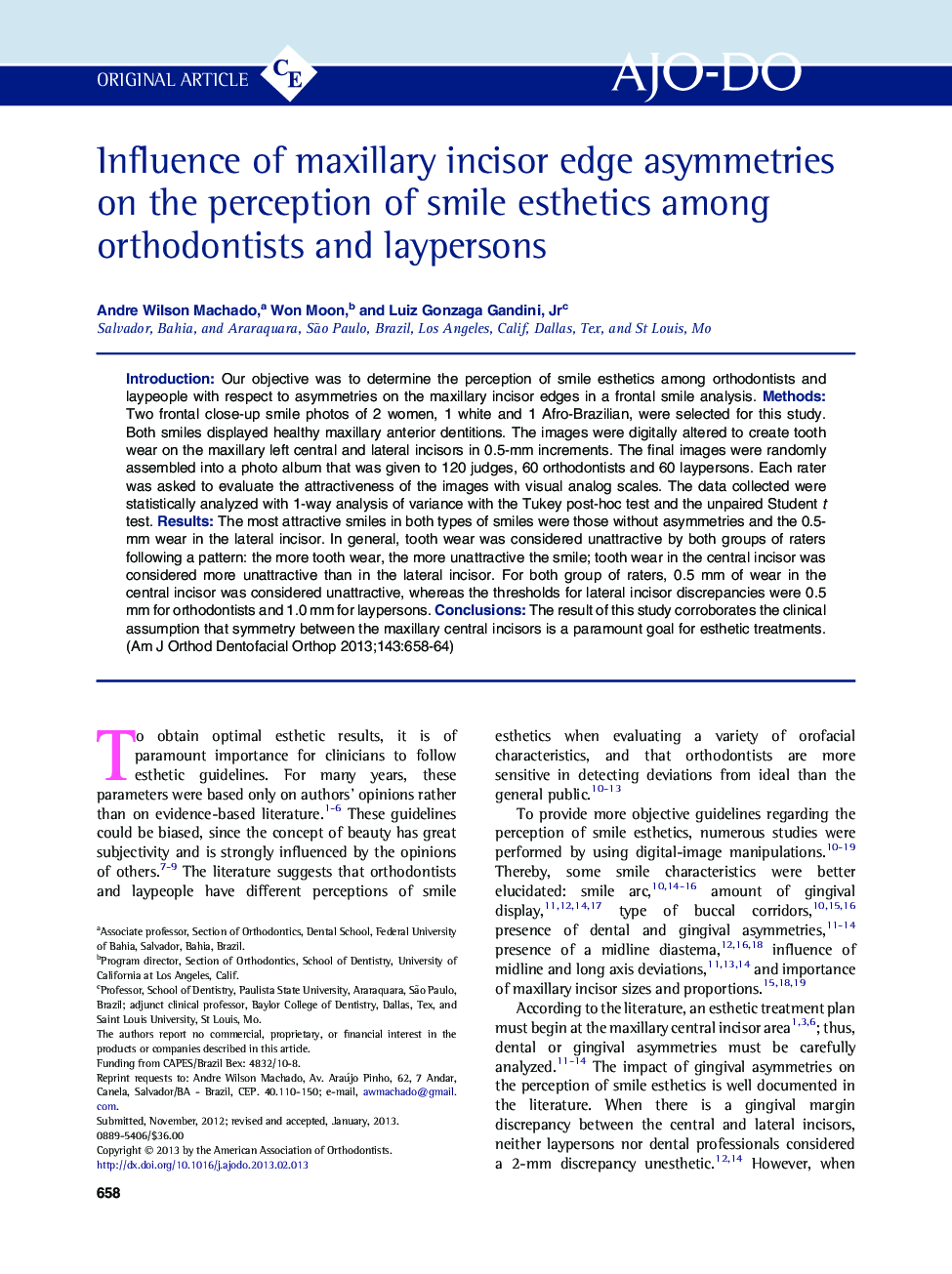| Article ID | Journal | Published Year | Pages | File Type |
|---|---|---|---|---|
| 3116615 | American Journal of Orthodontics and Dentofacial Orthopedics | 2013 | 7 Pages |
IntroductionOur objective was to determine the perception of smile esthetics among orthodontists and laypeople with respect to asymmetries on the maxillary incisor edges in a frontal smile analysis.MethodsTwo frontal close-up smile photos of 2 women, 1 white and 1 Afro-Brazilian, were selected for this study. Both smiles displayed healthy maxillary anterior dentitions. The images were digitally altered to create tooth wear on the maxillary left central and lateral incisors in 0.5-mm increments. The final images were randomly assembled into a photo album that was given to 120 judges, 60 orthodontists and 60 laypersons. Each rater was asked to evaluate the attractiveness of the images with visual analog scales. The data collected were statistically analyzed with 1-way analysis of variance with the Tukey post-hoc test and the unpaired Student t test.ResultsThe most attractive smiles in both types of smiles were those without asymmetries and the 0.5-mm wear in the lateral incisor. In general, tooth wear was considered unattractive by both groups of raters following a pattern: the more tooth wear, the more unattractive the smile; tooth wear in the central incisor was considered more unattractive than in the lateral incisor. For both group of raters, 0.5 mm of wear in the central incisor was considered unattractive, whereas the thresholds for lateral incisor discrepancies were 0.5 mm for orthodontists and 1.0 mm for laypersons.ConclusionsThe result of this study corroborates the clinical assumption that symmetry between the maxillary central incisors is a paramount goal for esthetic treatments.
